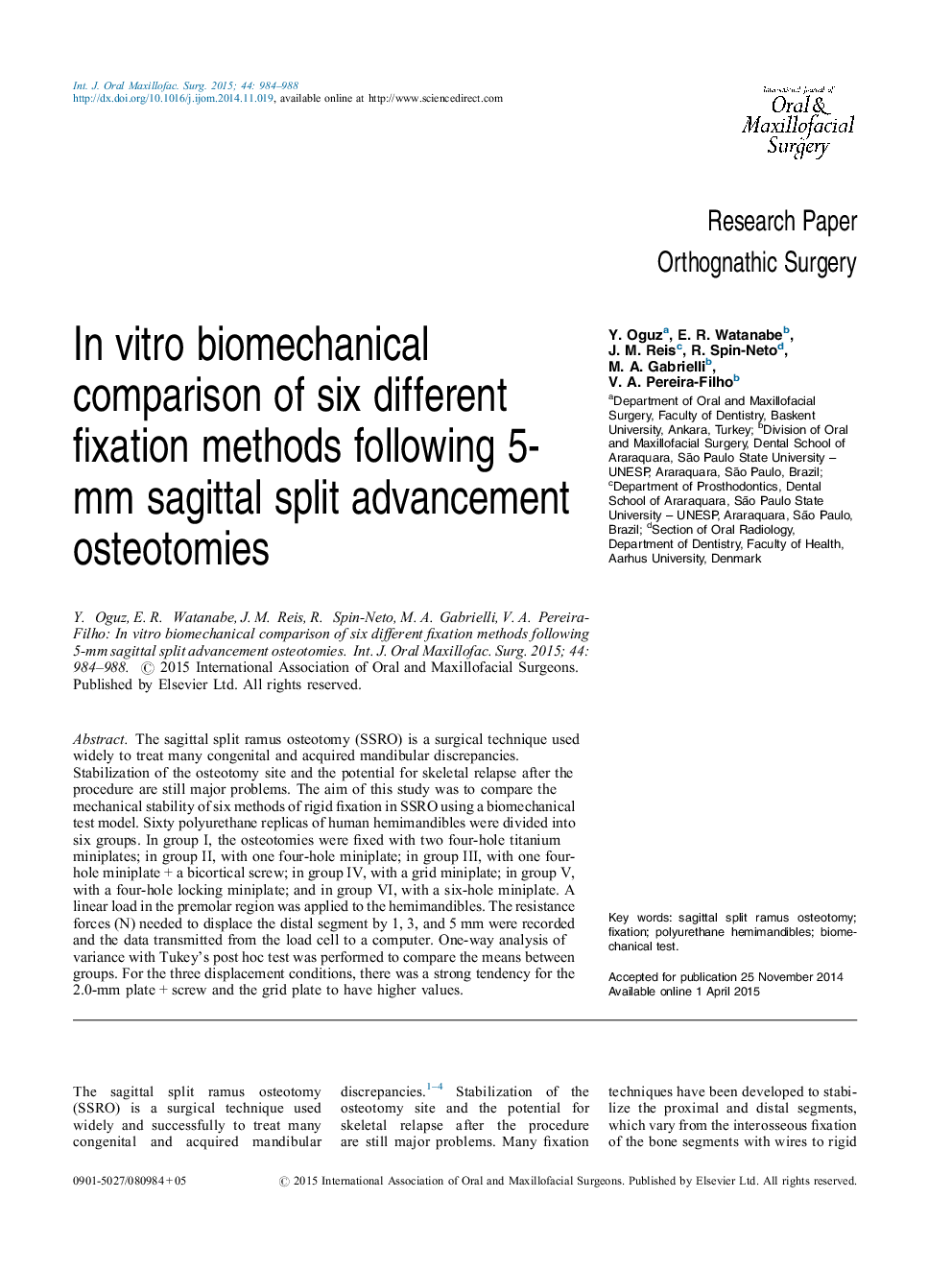| Article ID | Journal | Published Year | Pages | File Type |
|---|---|---|---|---|
| 3132266 | International Journal of Oral and Maxillofacial Surgery | 2015 | 5 Pages |
The sagittal split ramus osteotomy (SSRO) is a surgical technique used widely to treat many congenital and acquired mandibular discrepancies. Stabilization of the osteotomy site and the potential for skeletal relapse after the procedure are still major problems. The aim of this study was to compare the mechanical stability of six methods of rigid fixation in SSRO using a biomechanical test model. Sixty polyurethane replicas of human hemimandibles were divided into six groups. In group I, the osteotomies were fixed with two four-hole titanium miniplates; in group II, with one four-hole miniplate; in group III, with one four-hole miniplate + a bicortical screw; in group IV, with a grid miniplate; in group V, with a four-hole locking miniplate; and in group VI, with a six-hole miniplate. A linear load in the premolar region was applied to the hemimandibles. The resistance forces (N) needed to displace the distal segment by 1, 3, and 5 mm were recorded and the data transmitted from the load cell to a computer. One-way analysis of variance with Tukey's post hoc test was performed to compare the means between groups. For the three displacement conditions, there was a strong tendency for the 2.0-mm plate + screw and the grid plate to have higher values.
